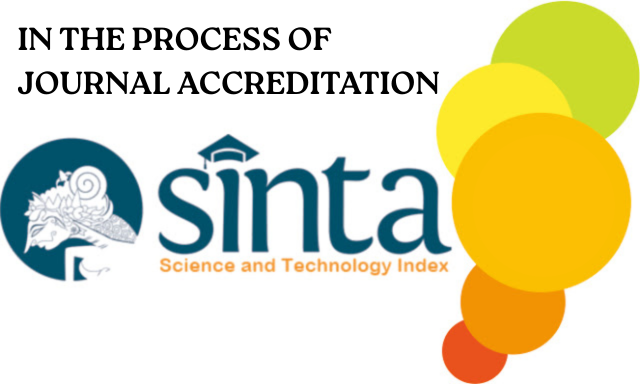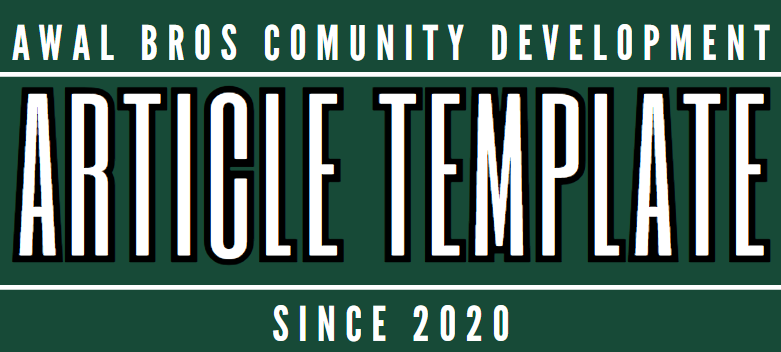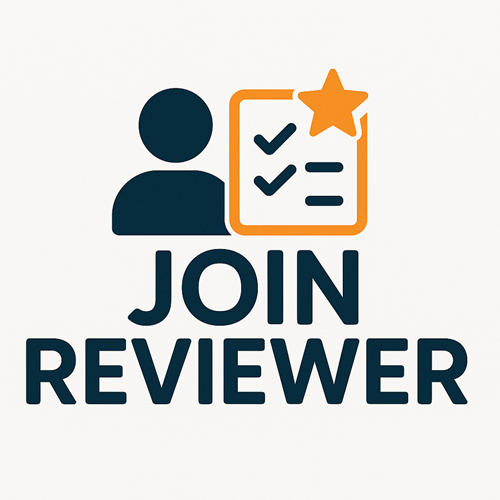ACCREDITATION
Author Guidelines
Article Outline
Article Framework consists of:
Title,
Abstract,
1. Introduction,
2. Method,
3. Results and Discussion,
4. Conclusion,
5. Suggestions
Thank-you note
References
The number of pages in articles in this journal is at least 5 pages. Every article published in the Awal Bros Journal of Community Development (ABJCD) must comply with the standard rules according to this guide which refers to the journal published by Elsevier (www.sciencedirect.com). Journal writing templates can be downloaded on the website.
Introduction, Methods, Results and Discussion, and Conclusions are written using Cambria 11 points, 1 spacing, right-left alignment (or normal style in this template). The first line does not require an indent (or tab) because there is a wider gap between paragraphs as shown below. The content of the manuscript contains sections Introduction, Method of Application, Results and Achievement of Goals, Conclusions, Acknowledgments, and Bibliography. Make sure the content of the manuscript, except for the thank you section, does not contain the personal identity or affiliation of the authors.
Research Title
The title must be concise and informative, describing the results of the study and the variables, and the relationship between these variables can be seen in the title. The title of the article should be at most 12 words.
Abstract
The abstract should be about 200-250 words, in English with italics cambria 11 point. Organized in this structure: The abstract should be clear, descriptive and should provide a brief overview of community service issues undertaken / researched. Abstracts include reasons for the selection of topics or the importance of research topics / community service, methods of research / devotion and outcome summary. The abstract should end with a comment about the importance of the result or a brief conclusion.
Preliminary
Broadly speaking, the introduction contains the background, problem formulation, activity objectives, and literature review. Authors are required to express quantitatively the portrait, profile, and condition of the target audience involved in community service activities. It can also be described the condition and potential of the area in terms of physical, social, economic, and environmental relevant to the activities carried out. Also explain the potential that is used as material for community service activities. The author is asked to formulate the problem concretely and clearly in this section. Explain the goals to be achieved in service activities.
This section is supported by a literature review which is used to support the concept of service. Authors are required to present a literature review that is primary (references to journal articles and conference proceedings) and up-to-date (references published within the last 10 years). Literature review is not limited to theory, but also empirical evidence. Enrich this introductory part with efforts that have been made by other parties. This article is the result of service which is the downstream of the results of service, it can be the result of own service or other service.
Method
In the application method section, clearly and concisely describe the methods used to achieve the goals that have been proclaimed in the service activities. The results of the service must be measurable and the authors are asked to explain the measuring instruments used, both descriptively and qualitatively. Explain how to measure the level of achievement of the success of service activities. The level of achievement can be seen in terms of changes in attitudes, socio-culture, and economy of the target community.
Results and Discussion
This section describes how activities are carried out to achieve goals. Explain the indicators of achieving the goals and the benchmarks used to state the success of the service activities that have been carried out. Express the advantages and disadvantages of the external or the main focus of the activity if it is seen that it is in accordance with the conditions of the community at the location of the activity. Also explain the difficulty level of implementing activities and production of goods and opportunities for future development. Articles can be strengthened with relevant documentation related to services or goods as outputs, or the main focus of activities. Documentation can be in the form of images of the implementation or implementation process, images of product prototypes, tables, graphs, and so on.
Conclusion
The conclusion should clearly indicate the results obtained, the advantages and disadvantages, and the possibility of further development. Conclusions can be in the form of paragraphs, avoid using bullets & numbering. Avoid opinions as well as suggestions for continued service. Suggestions are better included in the results & discussion.
Suggestion
Suggestions can be in the form of suggestions for community service that can be done next or suggestions for stakeholders on the results of community service activities
Thank-you note
If necessary, a thank you letter can be written which is a form of appreciation for contributions from individuals and institutions who cannot enter as writers. For example, research funders associated with this publication.
References
All citations and references used by the author must be presented in this section in a manner consistent with the text, figure or table cited. The bibliography is written in alphabetical order according to the first letter of the author's name. The authors are referenced according to the given bibliography. Examples of writing are given in the Writing Guidelines for ABJCD.
Library Writing Format
Journal article: (Times New Roman, 11, Space 1.15)
Anderson,S.D., 1992. Project quality and project managers. International Journal of Project Management 10 (3), 138–144.
Benner, M.J., Tushman, M.L., 2003. Exploitation, exploration, and process management: the productivity dilemma revisited.AcademyofManagementReview 28 (2), 238–256.
Book :
Christensen, C.M., 1998. The Innovator’s Dilemma: When New Technologies Cause Great Firms to Fail.HarvardBusinessSchoolPress,Boston,MA.
Deming, W.E., 1986. Out of Crisis.MITCenterfor Advanced Engineering Study,Cambridge,MA.
Compilation Books (edited book)
Duncan, R.B., 1976. The ambidextrous organization: designing dual structures for innovation. In: Kilmann, R.H., Pondy, L.R., Slevin, D. (Eds.), The Management of Organization, vol. 1.North-Holland,New York, NY, 167–188.
Seminar Proceedings:
Clare, L., Pottie, G., Agre, J., 1999. Self-organizing distributed sensor networks, Proceedings SPIE Conference Unattended Ground Sensor Technologies and Applications, vol. 3713,Orlando,April 8, 229–237.
Thesis/thesis/dissertation:
Heinzelman, W., 2000. Application-specific protocol architectures for wireless networks, Ph.D. dissertation, Massachusetts Institute of Technology,Cambridge.
Internet:
Honeycutt, H., 2011. Communication and Design Course, 1998. Website: http://dcr.rpi.edu/commdesign/class1.html, diakses tanggal 3 Maret.
DOWNLOAD TEMPLATE ARTIKEL












